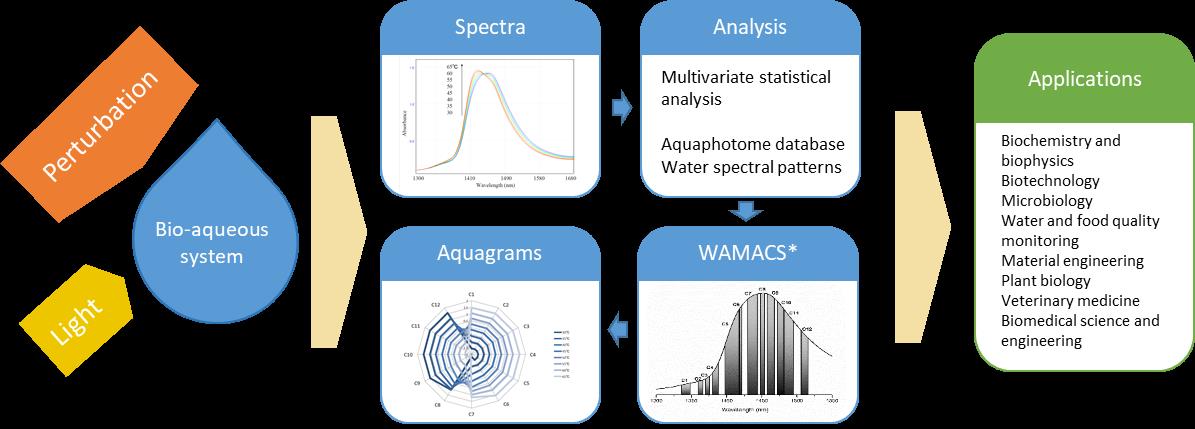
Published 2021-12-10
Keywords
- aquaphotomics,
- spectroscopy,
- water,
- light,
- bio-measurements
How to Cite
Copyright (c) 2019 Everine B. van de Kraats, Jelena Mun?an, Roumiana N. Tsenkova

This work is licensed under a Creative Commons Attribution 4.0 International License.
Abstract
Aquaphotomics is a novel scientific discipline which has made rapid progress in just 14 years since its establishment in 2005. The main novelty of this field using spectroscopy is placing the focus on water, as a complex molecular matrix and an integral part of any aqueous system. Water is sensitive to any change the system experiences – external or internal. As such, the molecular structure of water revealed through its interaction with light of all frequencies becomes a source of information about the state of the system, an integrative marker of system dynamics.
This novel field shifts the paradigm of seeing water in a system as a passive, inert molecule to one which can build various structures with various functionalities, giving water an active role in biological and aqueous systems. Owing to the high sensitivity of hydrogen bonds, the water molecules are incredibly adaptive to their surroundings, reshaping and adjusting in response to changes of the aqueous or biological systems, and this property in aquaphotomics is utilized as a key principle for various purposes of bio-measurements, bio-diagnostics and biomonitoring.
This paper will present the origin and concept of aquaphotomics and will, through a series of examples of applications, illustrate many opportunities and directions opened for novel scientific and technological developments.




